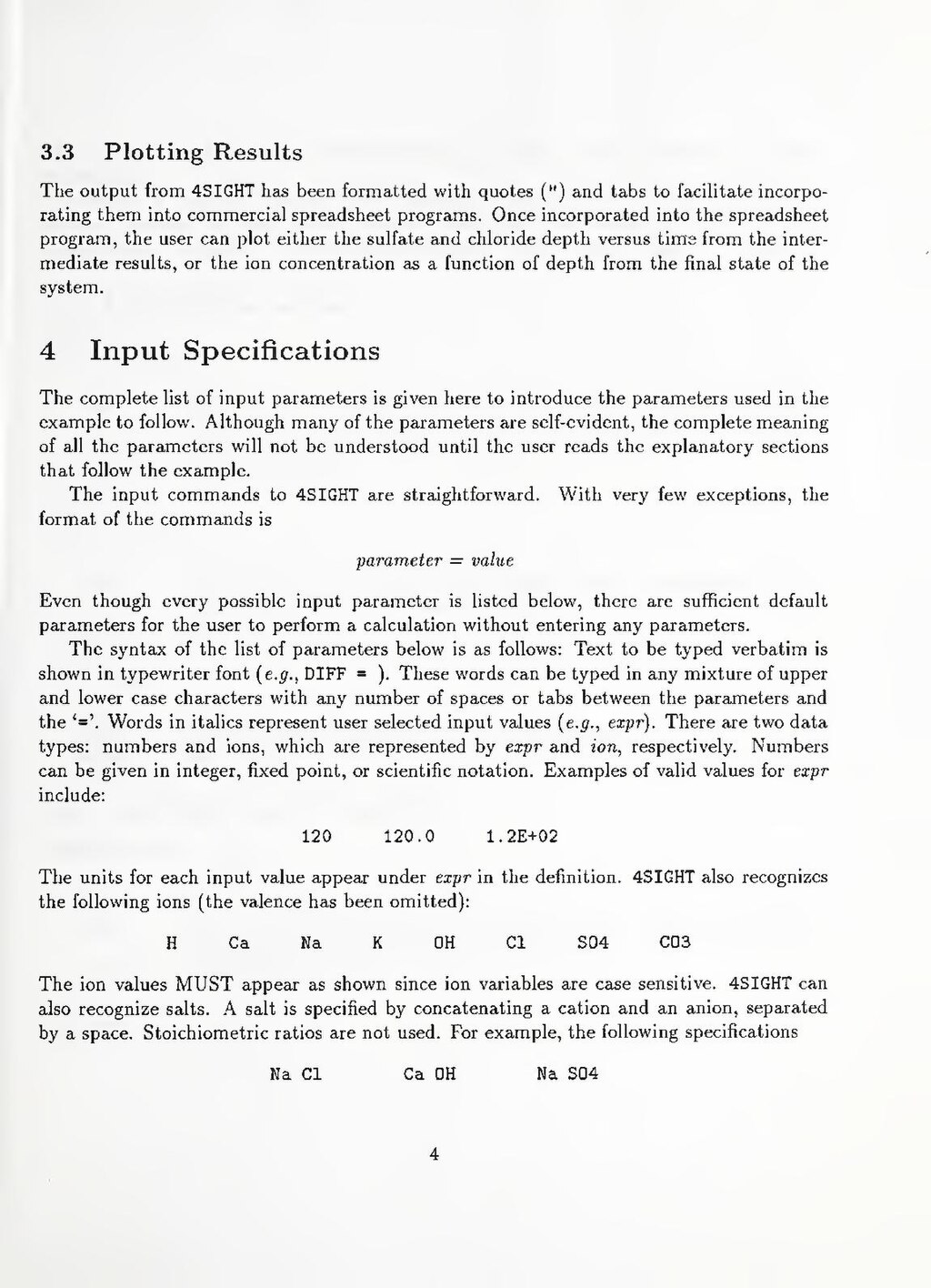3.3Plotting Results
The output from 4SIGHT has been formatted with quotes (") and tabs to facilitate incorporating them into commercial spreadsheet programs. Once incorporated into the spreadsheet program, the user can plot either the sulfate and chloride depth versus time from the intermediate results, or the ion concentration as a function of depth from the final state of the system.
4Input Specifications
The complete list of input parameters is given here to introduce the parameters used in the example to follow. Although many of the parameters are self-evident, the complete meaning of all the parameters will not be understood until the user reads the explanatory sections that follow the example.
The input commands to 4SIGHT are straightforward. With very few exceptions, the format of the commands is
parameter = value
Even though every possible input parameter is listed below, there are sufficient default parameters for the user to perform a calculation without entering any parameters.
The syntax of the list of parameters below is a follows: Text to be typed verbatim is shown in typewriter font (e.g., DIFF = ). These words can be typed in any mixture of upper and lower case characters with any number of spaces or tabs between the parameters and the ‘=’. Words in italics represent user selected input values (e.g., expr). There are two data types: numbers and ions, which are represented by expr and ion, respectively. Number can be given in integer, fixed point, or scientific notation. Examples of valid values for expr include:
120120.01.2E+02
The units for each input value appear under expr in the definition. 4SIGHT also recognizes the following ions (the valence has been omitted):
HCaNaKOHClSO4CO3
The ion values MUST appear as shown since ion variables are case sensitive. 4SIGHT can also recognize salts. A salt is specified by concatenating a cation and an anion, separated by a space. Stoichiometric ratios are not used. For example, the following specifications
Na ClCa OHNa SO4
4
